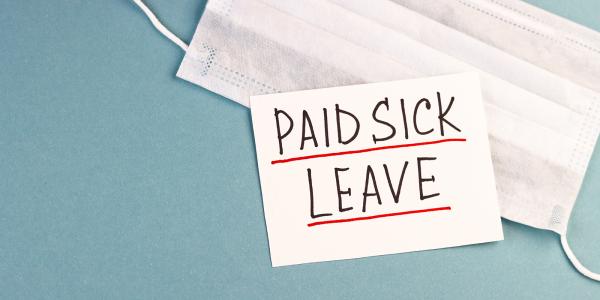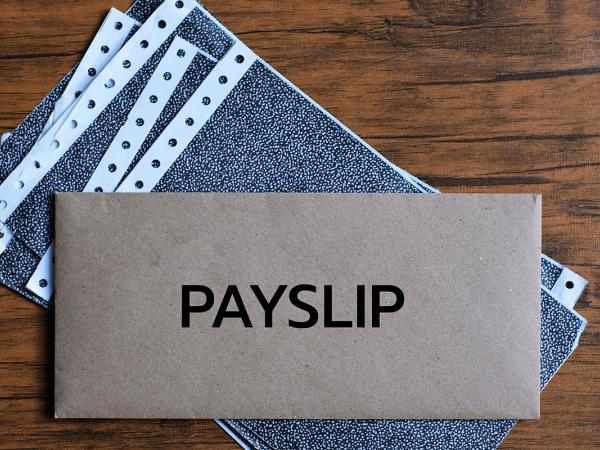Statutory Sick Pay: information for employers
Statutory Sick Pay (SSP) is a payment given by employers to employees who are off work sick. If you employ someone, you might need to think about SSP. This page tells you the basics of SSP and how to deal with SSP for tax and National Insurance (NIC) purposes in your payroll.

Content on this page:
SSP – the basics
If an employee is sick for four or more consecutive days (including non-work days, such as weekends), they may be entitled to SSP for a maximum of 28 weeks. Such a period is known as a ‘period of incapacity for work’ (PIW).
SSP is payable in respect of days within a PIW that your employee would usually be expected to work – these are called ‘qualifying days’. Outside of the coronavirus situation, SSP is normally not payable for the first three qualifying days of sickness (sometimes these are known as 'waiting days').
There are certain qualifying conditions for SSP which have to be met. For example, SSP is not payable at the same time as Statutory Maternity Pay or where an employee’s average weekly earnings in the eight weeks prior to the start of the PIW are less than £123 in 2024/25.
Guidance to help employers convert their employees' monthly earnings into weekly earnings can be found on GOV.UK. There is also guidance available on the rules in complex or unusual situations.
Where the employee has not yet been in the employment for 8 weeks, SSP is worked out by reference to the amount of pay the employee is due to be paid under their employment contract. This means that even if your employee has only just started, they may be entitled to SSP even if they have not been paid yet (although they must have done some work under their contract to qualify – even if it is just a few hours' worth).
SSP is available to all 'employed earners' (people working for an employer who has a liability to pay Employer National Insurance), including casual and irregular employees, provided they otherwise qualify.
If your employee is not entitled to SSP, then you must give them form SSP1 explaining why not.
SSP is the legal minimum you have to pay. If you have an alternative agreement with your employee (for example, to continue to pay them as normal when they are sick), you will not have to pay SSP over and above what you are already paying, provided what you are paying is above the SSP rate.
Of course, paying more than SSP may not be possible due to your financial circumstances. In this case (or if they aren’t entitled to SSP), your staff should consider whether they can claim contributory or ‘new-style’ ESA or UC, as explained on our Statutory Sick Pay for individuals page.
Verifying sickness
You will probably want to satisfy yourself that the illness is genuine before paying SSP. Your employee would usually 'self-certify' for the first week of illness and obtain a doctor’s note (these are no longer called a sick note, they are called a ‘fit note’) for longer periods of absence. Please note you cannot insist on a doctor’s note for the first 7 days. If you are not satisfied your employee’s sickness is genuine then you have to give a written reason for refusing to pay SSP to them.
Since July 2022, it is possible for other healthcare professionals to issue fit notes and they no longer need to be ‘wet signed’. This should make it easier for employees to get one. Further guidance for employers is available on GOV.UK.
Calculating and recording SSP
The weekly rate of SSP from 6 April 2024 is £116.75 The actual amount paid daily depends on the number of qualifying days an individual has in a week.
Part-time workers who earn at least £123 per week qualify for SSP at the normal full weekly rate – they do not receive a pro rata amount. So, someone who is ill for two weeks (after waiting days) and who normally works three days a week, should also get £233.50 in total.
If you are an online filer, your payroll software (including HMRC's Basic PAYE Tools) will help you calculate any SSP due but it is useful to be able to understand for yourself how the figures are arrived at. If using HMRC’s Basic PAYE Tools, you should enter the amount to be paid under Statutory Payments, rather than in the usual place.
If you are a paper filer, there is a standalone calculator on GOV.UK to help you calculate the amount of SSP due.
Penalties may apply if you fail to make correct payments.
If you do have to make SSP payments, you need to keep records of this – including all dates that the employee’s sickness lasts, plus copies of any medical evidence provided. You can use HMRC’s Statutory Sick Pay record sheet to do this, although you can retain the information in another way if you wish, for example within your payroll software These records must be kept for 3 years after the end of the tax year to which they relate.
Paying SSP
If an employee is entitled to SSP, the payment will be due at the same time as their normal wages (for example, weekly/monthly) and SSP payments will be treated as earnings for Pay As You Earn (PAYE) tax and NIC purposes.
If possible, it should be itemised on the payslip as SSP to differentiate it from any other taxable income.
SSP usually stops once an employee returns to work or their contract ends (whatever comes first), unless the maximum number of weeks for SSP is reached.
If your employee has recently received SSP and is now receiving it again, then this period must be 'linked' with the previous period (even if the sickness is not related) if it is within 8 weeks of the last period of sickness and each period has lasted for at least 4 days.
You should be aware that there is a limit of 28 weeks of SSP in any one period of sickness, including in a linked period. So, if you have already paid 28 weeks of SSP and the current period of illness is linked to the last period, then no further SSP is due.
Your employee may no longer be eligible for SSP if they have had a continuous series of linked periods of absence that lasts more than three years, even if they haven’t been paid 28 weeks' worth of SSP.
Claim back SSP
If you were a ‘small’ employer, you used to be able to recover some of the SSP you paid to your employees, however you cannot now recover any SSP - unless it fell within the limited coronavirus related provisions for an employer rebate.
Further help
There is lots of useful information in the GOV.UK Statutory Sick Pay employer guide.
For a full collection of detailed guidance for employees and employers on Statutory Sick Pay, Statutory Maternity Pay, Statutory Paternity Pay and Statutory Adoption Pay, please see GOV.UK.



